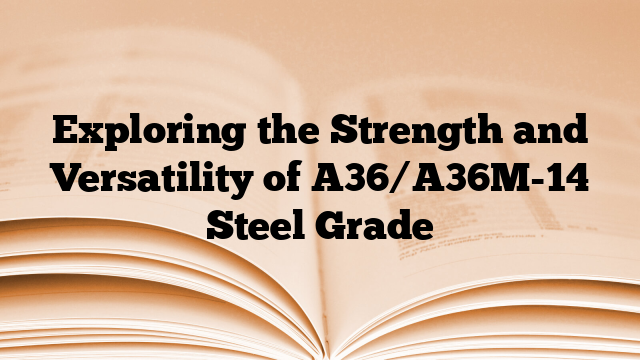The A36/A36M-14 steel grade is a standard specification for carbon structural steel. It is commonly used in construction and structural applications due to its high strength and versatility. This steel grade is widely regarded for its excellent welding properties and formability.
The chemical composition of A36/A36M-14 steel grade mainly consists of carbon (C), manganese (Mn), phosphorus (P), sulfur (S), silicon (Si), and copper (Cu). The carbon content is typically between 0.25% and 0.29%, while the manganese content ranges from 0.80% to 1.20%. The phosphorus and sulfur content should be kept below 0.040% and 0.050%, respectively. Silicon is specified to be within the range of 0.15% to 0.40%, while the copper content is generally less than 0.20%.
The mechanical properties of A36/A36M-14 steel grade are another significant aspect of its strength and versatility. The yield strength of this steel grade is around 250 MPa (36,000 psi), which indicates its ability to withstand a certain amount of stress before undergoing plastic deformation. The ultimate tensile strength is approximately 400-550 MPa (58,000-80,000 psi), providing further evidence of its high strength.
A36/A36M-14 steel grade also exhibits good ductility, allowing it to be easily formed and shaped into various structural components. It has excellent welding properties, making it suitable for joining and fabricating structures. Additionally, this steel grade is commonly used in bridge construction, building construction, and general structural purposes.
Overall, the A36/A36M-14 steel grade offers a combination of strength, versatility, and weldability, making it a popular choice in various industries. Its chemical composition and mechanical properties make it suitable for a wide range of applications, ensuring its widespread usage in the construction and manufacturing sectors.

